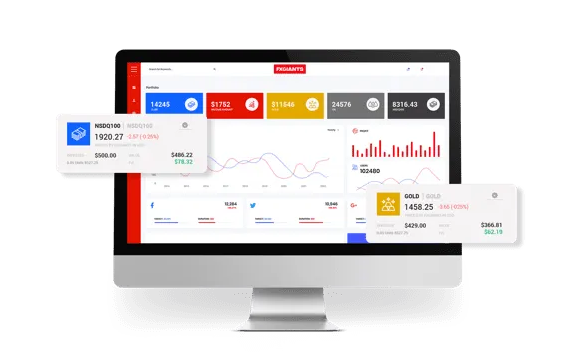Cfd trading is one of the most exciting ways to trade in today’s financial markets. It allows individuals to trade on the price movements of a variety of assets without actually owning them. This opens up a wide array of trading opportunities that were previously unavailable to retail traders. In this article, we’ll be exploring the world of Cfd trading, starting with an explanation of what they are, then discussing the advantages and disadvantages of trading CFDs, followed by some tips on how to get started, and finally exploring some of the most popular instruments traded using CFDs.
What are CFDs?
CFD stands for Contract for Difference, which is essentially an agreement between two parties to exchange the difference between the opening and closing prices of a particular asset. For example, if you believe that the price of gold will increase, you could buy a CFD that tracks the price of gold. If the price of gold increases, you can sell the CFD and profit from the difference. Conversely, if the price of gold decreases, you would incur a loss.
Advantages of Cfd trading
One of the main advantages of cfd trading is that it allows individuals to trade on the price movements of a wide range of assets, including stocks, commodities, indices, and currencies, without actually owning them. This means that traders can take advantage of opportunities in the markets they may not have been able to access otherwise. CFDs also offer leverage, allowing traders to take larger positions in the markets without needing as much capital upfront. Additionally, CFDs are often commission-free, with the costs of trading being built into the spread.
Disadvantages of Cfd trading
As with any form of trading, there are risks involved with CFDs. One of the biggest risks is the potential for losses. Cfd trading is purely speculative and traders can lose more than their initial investment. Additionally, the use of leverage can magnify losses, and traders need to be aware of the risks involved before entering a position. Finally, some CFD brokers may not be regulated, so it is important to choose a trustworthy broker with a good reputation.
Getting Started with Cfd trading
The first step in getting started with Cfd trading is to choose a reputable broker. There are many brokers out there, so it is important to ensure that the broker you choose is regulated. Once you have chosen a broker, you will need to open an account and fund it. Most brokers offer demo accounts, which allow traders to practice trading without risking any real money. It is important to use a demo account to get familiar with the platform before trading with real money.
Popular Instruments Traded Using CFDs
There are a variety of instruments that are commonly traded using CFDs. Some of the most popular instruments include stocks, commodities, indices, and currencies. Stocks are often popular with traders who follow company news and look for opportunities to profit from changes in the stock price. Commodities are popular with traders who like to focus on supply and demand factors, such as weather, geopolitical events, and global economic trends. Indices allow traders to gain exposure to the wider market, with the performance of an index reflecting the performance of a group of stocks or assets. Finally, currencies are popular with traders who like to trade the forex markets, taking advantage of fluctuations in exchange rates between different countries.
short:
Cfd trading offers exciting opportunities for traders to profit from the price movements of a wide variety of assets, without actually owning them. While Cfd trading does involve risks, it also offers potential rewards for those who are willing to take the time to learn about the markets and develop a solid trading plan. By choosing a reputable broker, using a demo account to practice, and focusing on a few popular instruments, traders can increase their chances of success in the world of Cfd trading.



